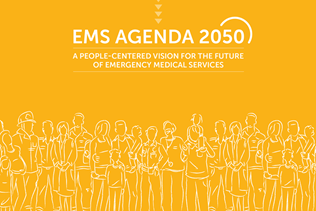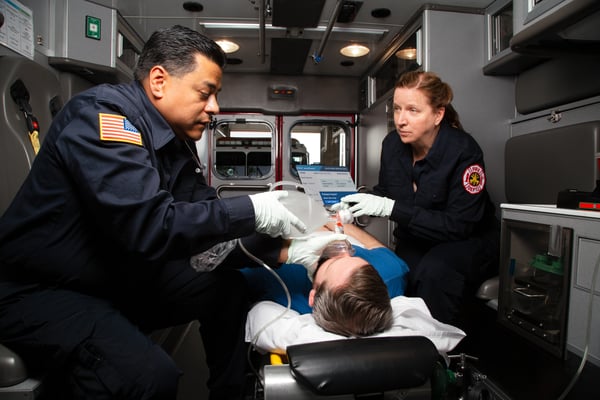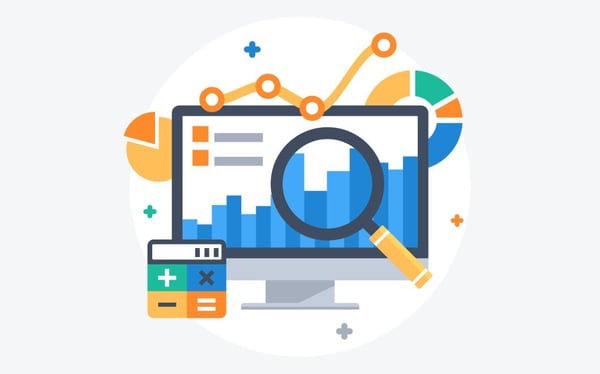News Alert: New ePCR Integration Simplifies EMS Data Management and Enables Better Care Coordination
The History of NEMSIS 3.5 and How a Data-driven Industry Saves More Lives
The Evolution of NEMSIS, the National EMS Information System (3 min read) The National Highway Traffic Safety Administration (NHTSA) built the National EMS Information System (NEMSIS) in 1969 to fulfill their mission: To reduce death and disability by providing leadership and coordination to the EMS community in assessing, planning, developing, and promoting comprehensive, evidence-based emergency medical services and 911 systems

The Evolution of NEMSIS, the National EMS Information System
(3 min read) The National Highway Traffic Safety Administration (NHTSA) built the National EMS Information System (NEMSIS) in 1969 to fulfill their mission: To reduce death and disability by providing leadership and coordination to the EMS community in assessing, planning, developing, and promoting comprehensive, evidence-based emergency medical services and 911 systems. Without quality, uniform data, systems can’t be assessed and therefore improved.
In the recent ZOLL® Summit Series ePCR Event webinar, “NEMSIS 3.5: Presented by NEMSIS and NHTSA,” Eric Cheney, EMS Specialist for NHTSA in the Office of Emergency Medical Services, explores why NEMSIS data matters and how it applies to real-world situations. Without quality patient care reports (PCRs), NEMSIS can’t build evidence-based guidelines and improve patient care for future. Cheney detailed how NEMSIS has evolved since its inception in 1969. Since then, datasets have increased to over 268 million unique events, allowing for higher-quality data used for operations and tools for day-to-day response. National standardized data collection processes and systems went from zero records in 1969 to 45 million records in 2020.
EMS Agenda 2050

What does the future look like for EMS? Previously, the focus of NEMSIS data was on care — not for the community. Once NEMSIS started looking at the community for its datasets, priority became patients first, then clinicians. Post-COVID sentiment has shifted perspectives on who should be prioritized when analyzing national datasets, and while patient care is essential, their number one priority is clinicians. As learned through the COVID experience, we must have people who are mentally and physically capable of delivering pre-hospital emergency care. If we prioritize change to focus on clinicians first, then patient care will improve.
EMS Data Collection: Establishing an Information-driven Future for EMS
We live in a culture of information, which makes emphasis on and clarity about data and information use as essential as ever. One way to improve the quality of data NEMSIS receives is by expanding stakeholder engagement to be more inclusive of the clinicians who collect data and the local systems that use it. The type of inventory used in an ambulance improves when those who use it are engaged in the decision-making process. For example, what type of disinfectant should be used when cleaning an ambulance? The more engagement from those providing care, the better the buy-in, and ultimately, the outcomes.

Ambulance inventory guidelines aren’t the only policies informed by NEMSIS data collection. Besides NHTSA, other organizations that utilize this data include the Department of Transportation (DOT) and the Office of National Drug Control Policy (ONDCP). The DOT’s interests are in crash data, patient injuries, and pedestrian and bicycle hits. The ONDCP uses this data to look at opioid use. Both departments look at information such as time of day and location to identify trends that can support changes to policies that could help to decrease these events.
The Power of NEMSIS: Transforming Data Into Action and Vision
The purpose of NEMSIS is to turn raw data into real change. A small piece of data can translate into knowledge, knowledge into understanding, and understanding into change. PCR data is collected from 50 states and territories, taking an average of seven minutes to make it to the NEMSIS national database. NEMSIS has eyes on what’s happening across the nation, almost in real time.
The value of this data is beyond measure, and it answers questions asked by scholars, journalists, and policy makers. For example, “Where and when do the intersections with more frequent accidents occur?” Because NEMSIS tracks data based on location, policies can be made to decrease accidents that happen more frequently in specific locations. Some other answers to questions posed that NEMSIS can answer: There’s a 7% decrease in per capita ambulance trips when Uber enters a city. When it comes to EMS response time, data indicates an increase in mortality corresponding to every additional minute of response time. When neighborhoods hold large events that require street barriers (for parades and marathons), transport takes an average of 4.4 minutes longer to arrive at the scene.
The benefits of national data collection for pre-hospital emergency care means policy changes that save lives through the quality, uniform data collected for NEMSIS.
About the ZOLL Summit Series
The ZOLL Summit Series is an annual educational event for ZOLL Data Systems customers. The last virtual event of 2021 will be taking place on September 21st – 22nd, 2021.
Related Posts
How STAT MedEvac Connected Device, Software, and Data Technology To Enhance QA and Elevate Care
Podcast: 4 Ways ePCR Software Can Relieve EMS’ Biggest Headaches
ZOLL Pulse Blog
Subscribe to our blog and receive quality content that makes your job as an EMS & fire, hospital, or AR professional easier.
ZOLL Pulse Blog
Subscribe to our blog and receive quality content that makes your job as an EMS, fire, hospital, or AR professional easier.




